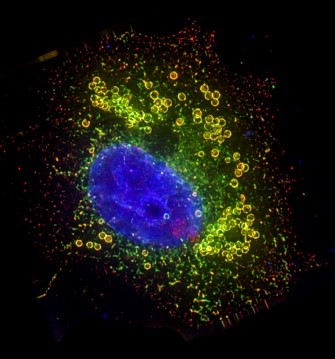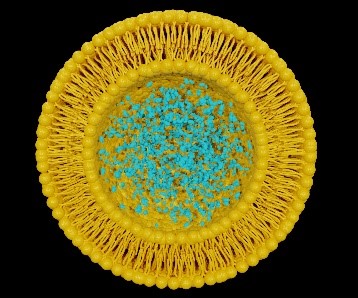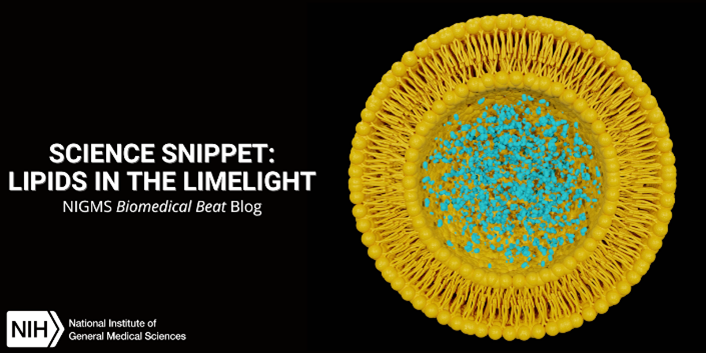
Have you ever wondered why your cells don’t spill into each other or what keeps your skin separate from your blood? The answer to both is lipids—a diverse group of organic compounds that don’t dissolve in water. They’re one of the four major building blocks of our bodies, along with proteins, carbohydrates, and nucleic acids. Types of lipids include:
- Fats, necessary for our bodies’ long-term energy storage and insulation. Some essential vitamins are fat soluble, meaning they must be associated with fat molecules to be effectively absorbed.
- Phospholipids, which make up a large part of cell and organelle membranes.
- Waxes, which help protect delicate surfaces. For instance, earwax protects the skin of the ear canal.
- Steroids, including cholesterol, a precursor to many hormones, which helps maintain the fluidity of cell membranes.
Mammalian cells, including our own, create tens of thousands of different lipids. Most of these lipids are produced by an organelle known as the endoplasmic reticulum (ER), specifically a portion of it called the smooth ER.
Researchers have discovered that enclosing some medicines, vaccines, and other beneficial molecules in spheres of lipids—called liposomes or lipid nanoparticles—can help them reach their targets in the body. The lipid spheres enable the molecules they’re carrying to move more easily through the body, preventing them from being destroyed in the bloodstream (because the lipids aren’t soluble in blood) and aiding their entry into cells, where they have their beneficial effects.

The U.S. Food and Drug Administration (FDA) approved the first vaccine with lipid nanoparticles, a hepatitis A vaccine, in 1993. An ovarian cancer treatment became the first approved medicine to use lipid nanoparticles 2 years later. Since then, many other medicines containing lipid nanoparticles have been approved. One emerging use of lipid nanoparticles is delivering DNA– and RNA-based therapies. In 2018, the FDA approved the first of these therapies to use lipid particles, an RNA-based treatment for hereditary transthyretin-mediated amyloidosis. Lipid nanoparticles are also used in the messenger RNA vaccines for COVID-19.
NIGMS-Funded Lipid Research
Many scientists who are supported by NIGMS study lipids. Some of these researchers are:
- Designing new types of lipid nanoparticles to more effectively deliver treatments for cancer and genetic diseases.
- Looking into how lipid droplets—organelles that store
lipids—form in cells. Lipid droplet formation is disrupted in metabolic conditions such as type 2 diabetes and obesity, and better understanding it could support new treatments. - Investigating how disease-causing bacteria obtain, modify, and use lipids from their hosts. This study could inform the advancement of new antibiotics.
- Developing new imaging technologies to track lipid droplet formation and breakdown in cancer cells. Understanding this phenomenon could shed light on why lipid droplets accumulate in these cells, which could aid in creating new therapies.
Learn about other scientific terms with the NIGMS glossary.


